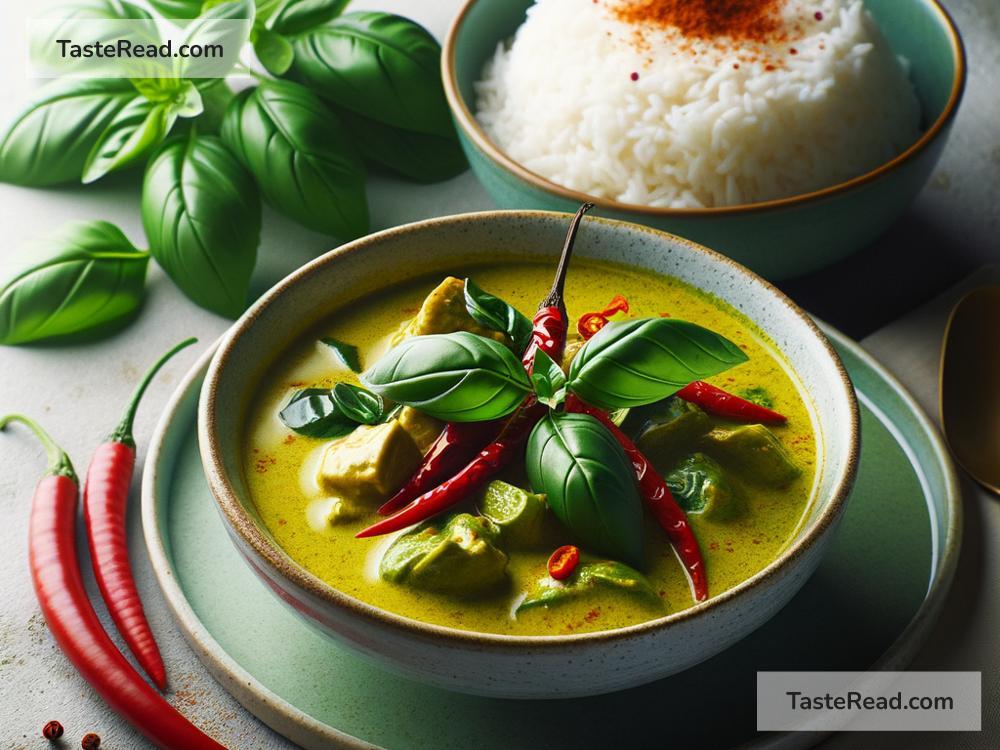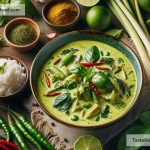In the rich tapestry of global cuisine, certain dishes stand out for their unforgettable flavors, unique ingredients, and fascinating stories of origin. Among them is the Thai Green Curry, a dish that has transcended its local boundaries to become a beloved meal in countless households around the world. But how did this spicy, aromatic curry capture the hearts (and taste buds) of so many? To understand this, we need to dive into the origins of the dish, explore its key ingredients, and trace its journey from a traditional Thai staple to a global sensation.
Roots in Thai Cuisine
Thai Green Curry, known locally as “Gaeng Keow Wan,” literally translates to ‘sweet green curry.’ However, don’t let the name mislead you. The ‘sweet’ more accurately refers to how the green color is perceived in Thai culture rather than the taste of the curry, which is a vibrant mix of spicy, sweet, and savory flavors. This dish has deep roots in Thai cuisine, with its history dating back centuries. It’s a perfect representation of the balance and complexity that Thai cooking is known for, combining a multitude of ingredients to create a harmonious dish.
Key Ingredients that Define Flavor
The heart of Thai Green Curry is its paste, a blend of green chili peppers, shallots, garlic, lemongrass, kaffir lime leaves, cilantro roots (or stems), galangal (a relative of ginger), and spices like coriander and cumin seeds, all pulverized together. This green paste not only gives the curry its signature color but also forms the base of its vibrant flavor profile. Coconut milk is another crucial component, adding richness and a creamy texture that beautifully balances the heat from the green chilies. Traditional versions of the curry might include a variety of meats like chicken, beef, or fish, as well as vegetables like eggplant and Thai basil leaves, which add freshness and depth to the dish.
Global Journey to Fame
So, how did Thai Green Curry make its way from the streets of Thailand to become a menu staple in restaurants and homes around the world? The answer lies in a combination of globalization, increased travel, and a growing fascination with Thai culture and cuisine.
In the latter half of the 20th century, as travel became more accessible, tourists flocked to Thailand, enchanted by its beautiful landscapes, rich culture, and delicious food. Many returned home craving the flavors they had experienced, sparking an interest in Thai cuisine far beyond its borders. Simultaneously, global cities saw an influx of Thai immigrants who brought their culinary traditions with them, opening restaurants that catered not just to their own communities but also to locals intrigued by the exotic flavors.
As people’s culinary horizons expanded, so did their willingness to experiment with cooking international dishes at home. The internet, cookbooks, and cooking shows played a significant role in this, offering recipes and cooking techniques that were once considered exotic and inaccessible. Ingredients that were once hard to find, like lemongrass, galangal, and kaffir lime leaves, started appearing in mainstream supermarkets, making it easier for food enthusiasts to explore and recreate authentic dishes like Thai Green Curry in their kitchens.
Thai Green Curry Today: A Household Name
Today, Thai Green Curry is celebrated not just for its robust flavors but also for its versatility. Vegetarians and vegans easily adapt it by substituting meat with tofu or various vegetables, making it a dish that can be enjoyed by almost everyone. It has become a comfort food for many, a dish to turn to for a cozy night in or to impress guests at a dinner party.
Its journey from a traditional Thai dish to a global household name is a testament to the power of cultural exchange and the universal language of food. Thai Green Curry exemplifies how sharing a meal can bridge cultures, fostering a deeper understanding and appreciation of the diversity that enriches our world.
As people continue to explore and blend culinary traditions, dishes like Thai Green Curry remind us that while food originates from specific places and cultures, its ability to bring people together knows no boundaries. Whether enjoyed in a bustling street market in Bangkok or a cozy kitchen halfway across the world, Thai Green Curry remains a cherished emblem of Thailand’s culinary heritage, a symbol of the delicious complexity of global cuisine.


